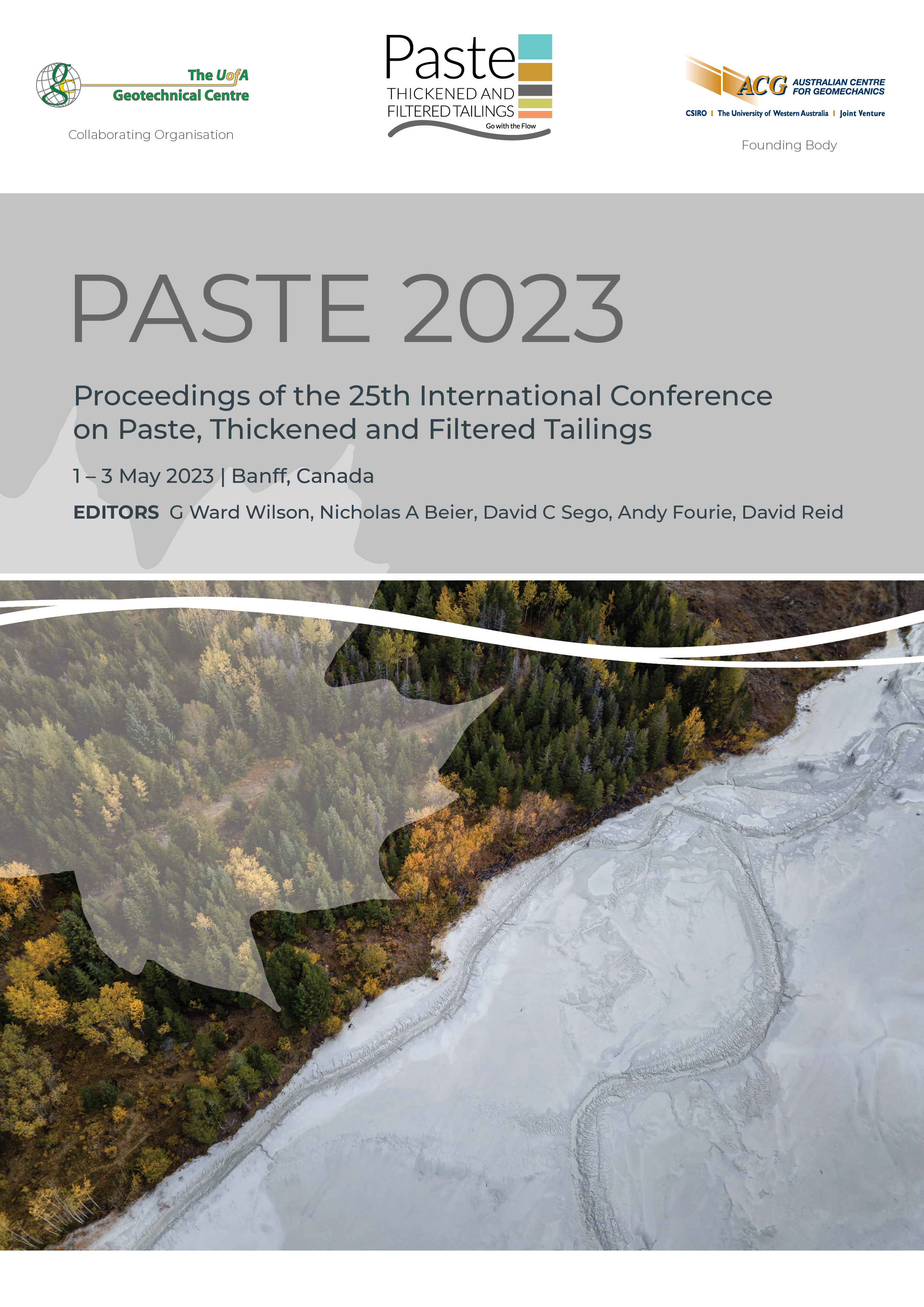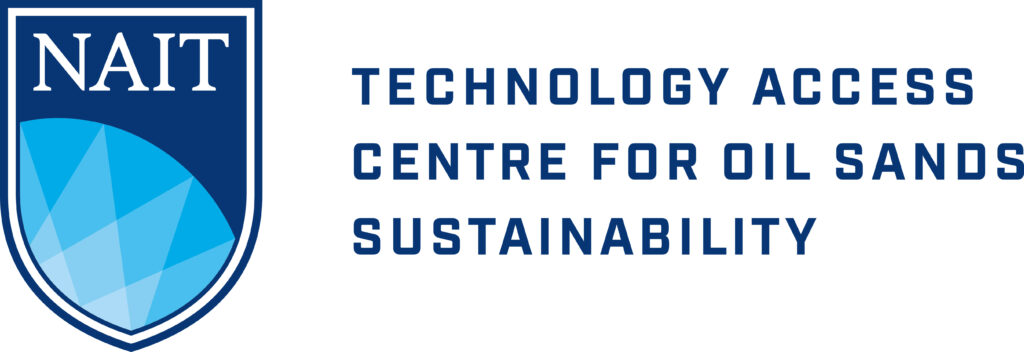Prediction of the mechanical properties of cemented paste backfill using artificial intelligence approaches

|
Authors: Amri, M; Belem, T; Mrad, H; Gélinas, LP; Masmoudi, F |
DOI https://doi.org/10.36487/ACG_repo/2355_17
Cite As:
Amri, M, Belem, T, Mrad, H, Gélinas, LP & Masmoudi, F 2023, 'Prediction of the mechanical properties of cemented paste backfill using artificial intelligence approaches', in GW Wilson, NA Beier, DC Sego, AB Fourie & D Reid (eds), Paste 2023: Proceedings of the 25th International Conference on Paste, Thickened and Filtered Tailings, Australian Centre for Geomechanics, Perth, pp. 233-243, https://doi.org/10.36487/ACG_repo/2355_17
Abstract:
In the digital era, the mining industry benefits from powerful tools that can help to optimise underground backfilling operations and to increase overall safety. Indeed, with current progress in artificial intelligence (AI), machine learning (ML) creates state-of-the-art techniques in the mining sector that could significantly improve the productivity and efficiency of mining operations. The purpose of this study is to apply ML algorithms, including the gradient boosting regressor (GBR), the XGBoost regressor (XGBR), and the support vector regressor (SVR) to predict the uniaxial compressive strength (UCS) of cemented paste backfill (CPB). A total of 1,587 UCS data were used to train the ML algorithms, considering different variables such as the types of tailings, binder and their proportion, solid mass concentration, slump height, water quality, and curing time. The raw data were pre-processed before training the models, as well as their hyperparameters tuning was made by a random search method followed by 4-fold cross-validation. The prediction results show that the GBR algorithm is the most powerful one which has a coefficient of correlation (R) between predicted and experimental values equal to 0.99 and a root-mean-square error (RMSE) equal to 0.16. This prediction is validated through new-lab prepared CPB specimens.
Keywords: artificial intelligence, machine learning, database, prediction models, uniaxial compressive strength, cemented paste backfill
References:
Arioglu, E 1984, ‘Design aspects of cemented aggregate fill mixes for tungsten stoping operations’, Mining Science and Technology, vol. 1, no. 3, pp. 209–214.
ASTM International 2020, Standard Test Method for Slump of Hydraulic-Cement Concrete (ASTM C143/C143M-20), ASTM International, West Conshohoken.
ASTM International 2021, Standard Test Method for Compressive Strength of Cylindrical Concrete Specimens (ASTM C39/C39M-21), ASTM International, West Conshohoken.
Belem, T, Benzaazoua, M & Bussière, B 2003, ‘Use of paste backfill as ground support. Part I: From its manufacture to its placement underground, Proceedings International Symposium on Post-mining, GISOS, Nancy, pp. 5-7.
Ercikdi, B, Yılmaz, T & Külekci, G 2014, ‘Strength and ultrasonic properties of cemented paste backfill’, Ultrasonics, vol. 54, no. 1, pp. 195-204.
Jakobowicz, E 2021, Python for the Data Scientist: From Language Basics to Machine Learning, 2nd edn, Dunod, Malakoff Cedex.
Lamos, A & Clark, I 1989, ‘The influence of material composition and sample geometry on the strength of cemented backfill’, in FP Hassani, MJ Scoble & TR Yu (eds), Innovations in Mining Backfill Technology, AA Balkema Publishers, Brookfield, pp. 89–94.
Landriault, DA, Verburg, R, Cincilla, W & Welch, D 1997, Paste Technology for Underground Backfill and Surface Tailings Disposal Applications, Canadian Institute of Mining and Metallurgy, technical workshop notes, vol. 27, 30 p.
Lu, X, Zhou, W, Ding, X, Shi, X, Luan, B & Li, M 2019, ‘Ensemble learning regression for estimating unconfined compressive strength of cemented paste backfill’, IEEE Access, vol. 99, pp. 7212572133.
Mathivet, V 2021, Machine Learning: Implementation in Python using Scikit-Learn, Editions ENI, Paris.
Mitchell, RJ & Wong, BC 1982, ‘Behaviour of cemented tailings sands’, Canadian Geotechnical Journal, vol. 19, no. 3, pp. 289–295.
Nelson, M & Illingworth, W 1991, A Practical Guide to Neural Nets, Addison-Wesley Publishing Co. Inc., Reading.
Nguyen, QH, Ly, HB, Ho, LS, Al-Ansari, N, Le, HV, Tran, VQ, Prakash, I, Pham, BT 2021, ‘Influence of data splitting on performance of machine learning models in prediction of shear strength of soil’, Mathematical Problems in Engineering, vol. 2021, article ID 4832864.
Ouattara, D 2017, Experimental Study of the Rheological and Mechanical Properties of Cemented Paste Mining Backfills Incorporating Superplasticizers, PhD thesis, Université du Québec en Abitibi-Témiscamingue, Rouyn Noranda.
Pham, BT, Hoang, TA, Nguyen, DM & Bui, DT 2018, ‘Prediction of shear strength of soft soil using machine learning methods’, Catena, vol. 166, pp. 181–191.
Qi, C, Fourie, A & Chen, Q 2018a, ‘Neural network and particle swarm optimization for predicting the unconfined compressive strength of cemented paste backfill’, Construction and Building Materials, vol. 159, pp. 473–478.
Qi, C, Chen, Q, Fourie, A & Zhang, Q 2018b, ‘An intelligent modelling framework for mechanical properties of cemented paste backfill’, Minerals Engineering, vol. 123, pp. 16–27.
Sahi, A 2016, Experimental Validation of an Optimal Binder Selection Model in the Formulation of Cemented mine backfill mix designs, master’s thesis, Polytechnique Montreal.
Sun, Y, Li, G, Zhang, J, Sun, J & Xu, J 2020, ‘Development of an ensemble intelligent model for assessing the strength of cemented paste backfill’, Advances in Civil Engineering, article ID 1643529.
Swan, G 1985, ‘A new approach to cemented backfill design’, CIM Bulletin, vol. 78, no. 884, pp. 53–58.
Yaseen, ZM, Tran, MT, Kim, S, Bakhshpoori, T & Deo, RC 2018, ‘Shear strength prediction of steel fiber reinforced concrete beam using hybrid intelligence models: a new approach’, Engineering Structures, vol. 177, pp. 244–255.
Yılmaz, T, & Ercikdi, B 2016, ‘Predicting the uniaxial compressive strength of cemented paste backfill from ultrasonic pulse velocity test’, Nondestructive Testing and Evaluation, vol. 31, no. 3, pp. 247–266.
Yu, T 1989, ‘Some factors relating to the stability of consolidated rockfill at Kidd Creek’, Innovations in Mining Backfill Technology, pp. 279–286.
Yu Z, Shi X-Z, Chen X, Zhou J, Qi C-C, Chen Q-S & Rao D-J 2021, ‘Artificial intelligence model for studying unconfined compressive performance of fiber-reinforced cemented paste backfill’, Transactions of Nonferrous Metals Society of China, vol. 31, no. 4, pp. 1087–1102.
© Copyright 2025, Australian Centre for Geomechanics (ACG), The University of Western Australia. All rights reserved.
View copyright/legal information
Please direct any queries or error reports to repository-acg@uwa.edu.au
View copyright/legal information
Please direct any queries or error reports to repository-acg@uwa.edu.au



